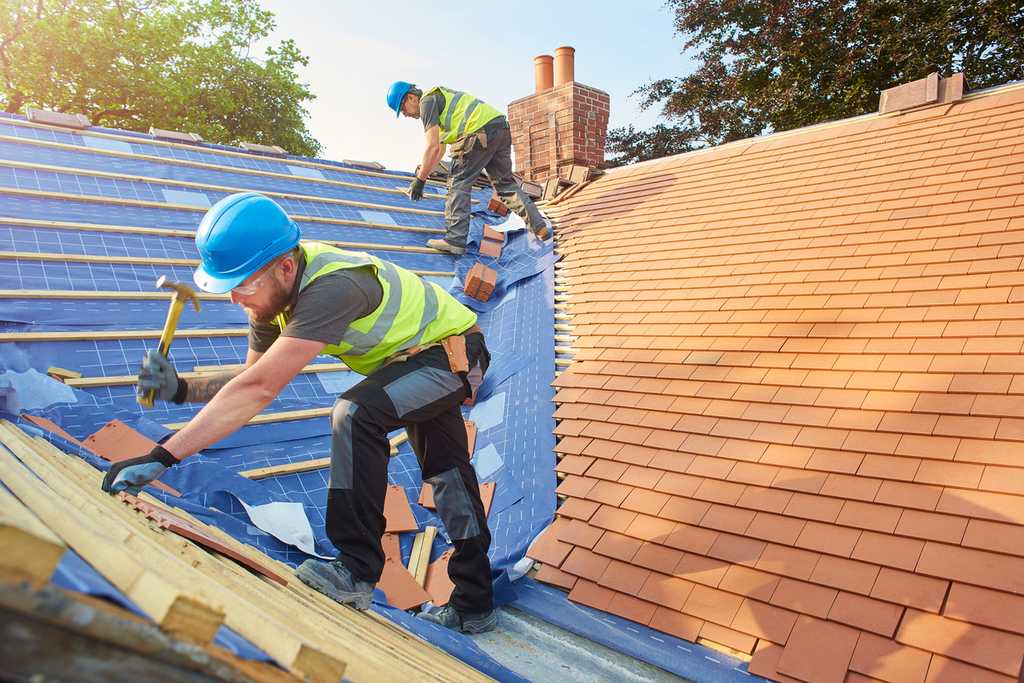Homeowners take out home insurance to protect their asset from damage caused by covered perils, or a protected event or circumstance, like fire, wind, rain, or hail damage. You faithfully pay your premiums each year, expecting your homeowners insurance company to pay when a peril occurs.
It finally happens. A storm rolls through and your roof is damaged. How do you get insurance to pay for roof replacement? If you don’t follow the right steps, you could end up getting far less than you should to repair or replace your roof. Or in the worst case, you could have your claim denied.
To avoid the stress of being denied or not getting what you’re entitled to, follow these steps on how to get insurance to pay for a roof replacement.
Understand How Roof Insurance Coverage Works
Roof insurance coverage is an essential part of any homeowner’s policy, if it’s included. To know how roof insurance coverage works and if you have it, you should first turn to your policy. The policy contract provides all the details about the type of homeowners insurance coverage you pay for, including what’s covered and what’s not covered.
If you don’t have a copy of your policy, ask for one from your insurance agent or the company. Then read it carefully to find out what type of roof insurance coverage you have. Most companies offer two types of roof insurance coverage.
Repair Coverage
This type of coverage is less common, paying only for repair costs, which also factors in depreciation, which is why this is most often referred to as actual cash value coverage. The older your roof, the less you’ll get to repair the damage.
Replacement Coverage
The more common roof coverage, replacement coverage pays to repair or replace the coverage to new condition when it’s damaged by a covered peril. Depreciation is not a factor with replacement coverage.
While replacement coverage is more expensive than actual cash value, or repair coverage, it will increase the amount of recoverable costs. If, after reviewing your homeowners insurance policy, you’re still not sure if you’re covered or the type of roof coverage you have, ask your agent. They can explain the type of coverage you have, where to find the information in your contract, and how to interpret the language in the policy.
Document and understand the damage
Now that you’ve reviewed your policy and believe you have coverage, it’s time to document and understand the damage. You want to be extremely thorough in documenting what occurred and the damage to your roof.
Take Notes
Write down the date of the damage and what occurred to cause the damage. Note as much as you can remember about the event, like the time it occurred, what happened, and when you first noticed the damage.
If you have storm damage, for example, it’s helpful to pull up news articles in your area to prove the date and location of the storm to show your insurance company. If someone vandalized your home, file a police report, keeping a copy to provide to your insurance company.
Take Photos
Grab your phone or camera and start snapping away or recording a video. You want as many photos as possible of the damage. You may need a ladder to get the best photos. Only do so if it’s safe to climb the ladder to get the best vantage point of the roof.
You can also use a drone to get damage photos. Besides outside photos of the roof damage, check inside, too. You may need to get into your attic to check for inside damage.
If it’s unsafe to get inside or outside photos, it’s usually best to hold off and call in a roofing company to assess the damage and assist you in getting photos for the insurance company.
Make Temporary Repairs
If you’re able to, you may need to make temporary repairs, like putting a tarp over the roof to prevent further damage. Make sure you take photos of each step and keep your receipts if you have to buy supplies to make temporary repairs.
Avoid throwing away any damaged pieces of the roof or other personal items. Place them to the side and wait until the insurance adjuster has looked at them and documented the damage. If you throw them away, even if you have photos, you may not be able to recover the costs for those damaged items.
Choosing a Reputable Roofer
Your roof is your first line of defense in protecting your family and belongings from damage from the elements. Installing and repairing a roof is expensive and takes skill, which is why you should take the appropriate steps in choosing a reputable roofer.
In many states, roofing contractors require a license to work. When you’re screening for a reputable roofer, ask them if they:
- Are bonded
- Are insured
- Have a license
- Will provide a written estimate
- Can provide three references from prior customers
You can also look at reviews online for the roofing company or independent roofing contractor. Places like the company’s website, Google My Business, HomeAdvisor, and TrustPilot can provide more information about the company’s services and prior customer experiences.
You should also review before and after photos of the company’s prior work. The right roofing company will repair or replace your roof without damaging your roof further.
Ask the roofing company about their experience in performing insurance repair or replacement work and if they can provide an inspection report for your insurance company. Roofing companies with prior insurance experience should be willing to work with your insurance adjuster and provide enough documentation to prove your case for roof replacement.
It’s always a good practice to get at least three different quotes for roof replacement or repair before deciding.
Beware of Storm Chasers
Storm chasers are salespeople that descend on a community after a storm occurs, trying to convince homeowners to sign up for repairs, often before they even have time to speak with their insurance company.
While some storm chasers may work with reputable roofers, many do not. They may inflate your claim to pocket the difference or tell you that to get the best price you need to get your roof done immediately. These are nothing but sales tactics to get you to sign a contract before you do your research to find a reputable roofer.
If you come across a storm chaser, ask them which company they work with and where their physical office is. Ask for a copy of their license, bonding, and insurance coverage. You can also look up their website and third-party reviews to see if they are reputable before making a decision. Or simply say no thank you, and do your research to find a reputable roofer in your area.
Filing a Claim and Getting Reimbursed
Most insurance companies want you to file a claim immediately after damage occurs. After filing a claim, it can take time to process it, especially if it was a widespread storm or natural disaster that caused extensive damage throughout the community or local area.
The sooner you file your claim, the faster you’ll get an insurance adjuster assigned to your case. The adjuster will come out to assess the damage, the events that caused the damage, and determine if your claim is approved or denied.
Even if you’ve done all the legwork by finding a contractor and getting an estimate, the insurance adjuster is the only one who can decide if your claim is approved or denied. If a covered peril causes the damage, they should approve it. But if it’s a case of normal wear and tear or neglect, prepare for the claim to be denied, as maintenance and age are not covered perils under a homeowner’s policy.
If your claim is approved and you’ve already had some out-of-pocket expenses, you can submit receipts to get reimbursed. Once you’ve selected a reputable roofer, the insurance company will usually pay them directly, less your policy deductible, which you’ll pay directly to the roofer.
If the insurance adjuster’s valuation and the roofing company’s estimate don’t align, this is where having a reputable and knowledgeable roofer with past insurance experience factors in. The roofer can fight for you to get the right amount to repair or replace the roof with the same quality materials on the existing roof.
Next Steps Following Roof Replacement Claim
Once your roof has been repaired or installed, the next steps include regular maintenance and inspection. Discuss maintenance steps with your roofer and ensure you follow through with them to keep your roof in great shape for the rest of its life.
Getting a regular inspection is another great next step, as it can make future claims easier and alert you to any maintenance issues to be resolved.The inspection will include photos and a written report by the roofer outlining the current condition of the roof, which can be passed onto your insurance company.

